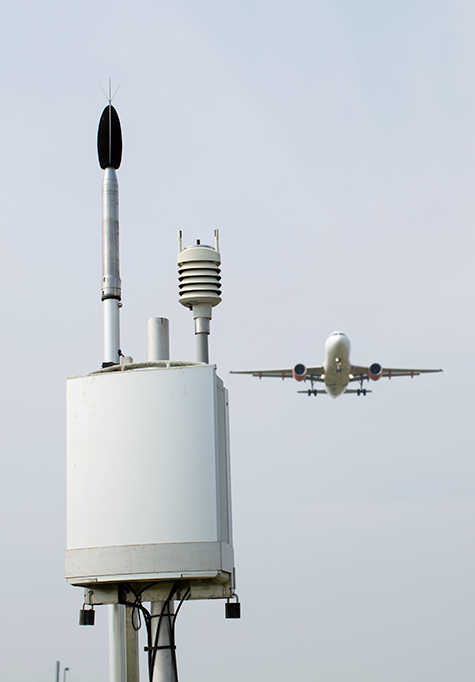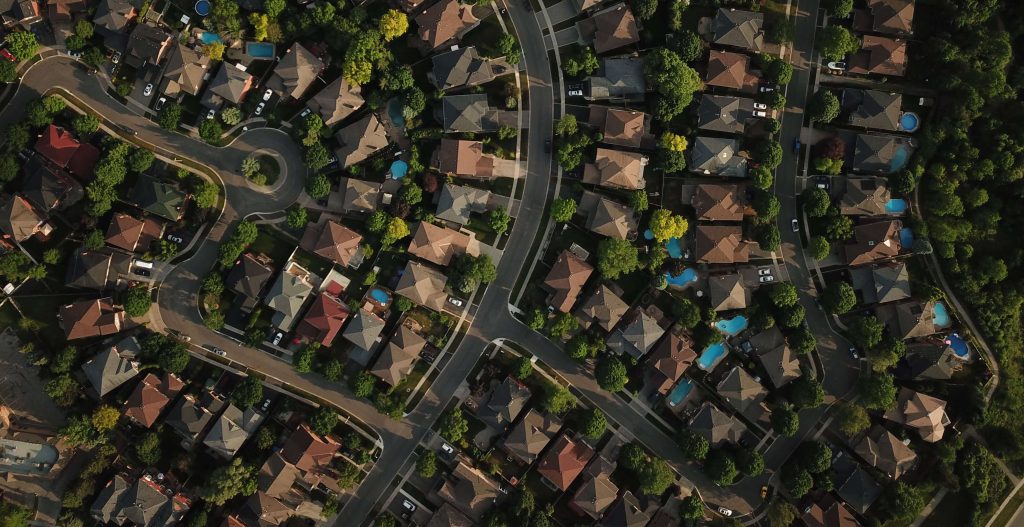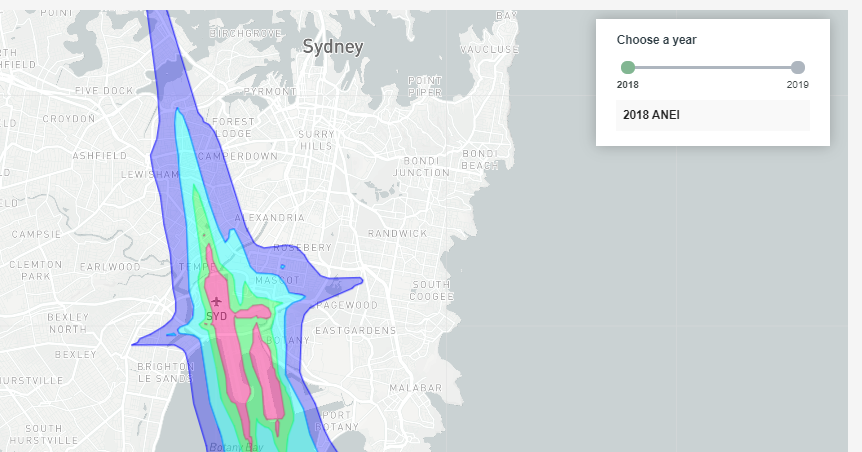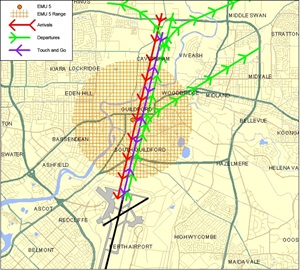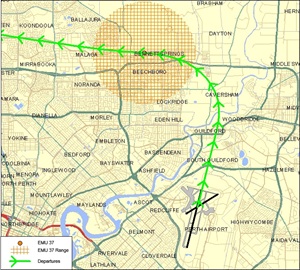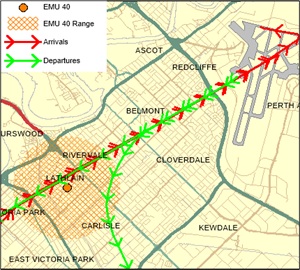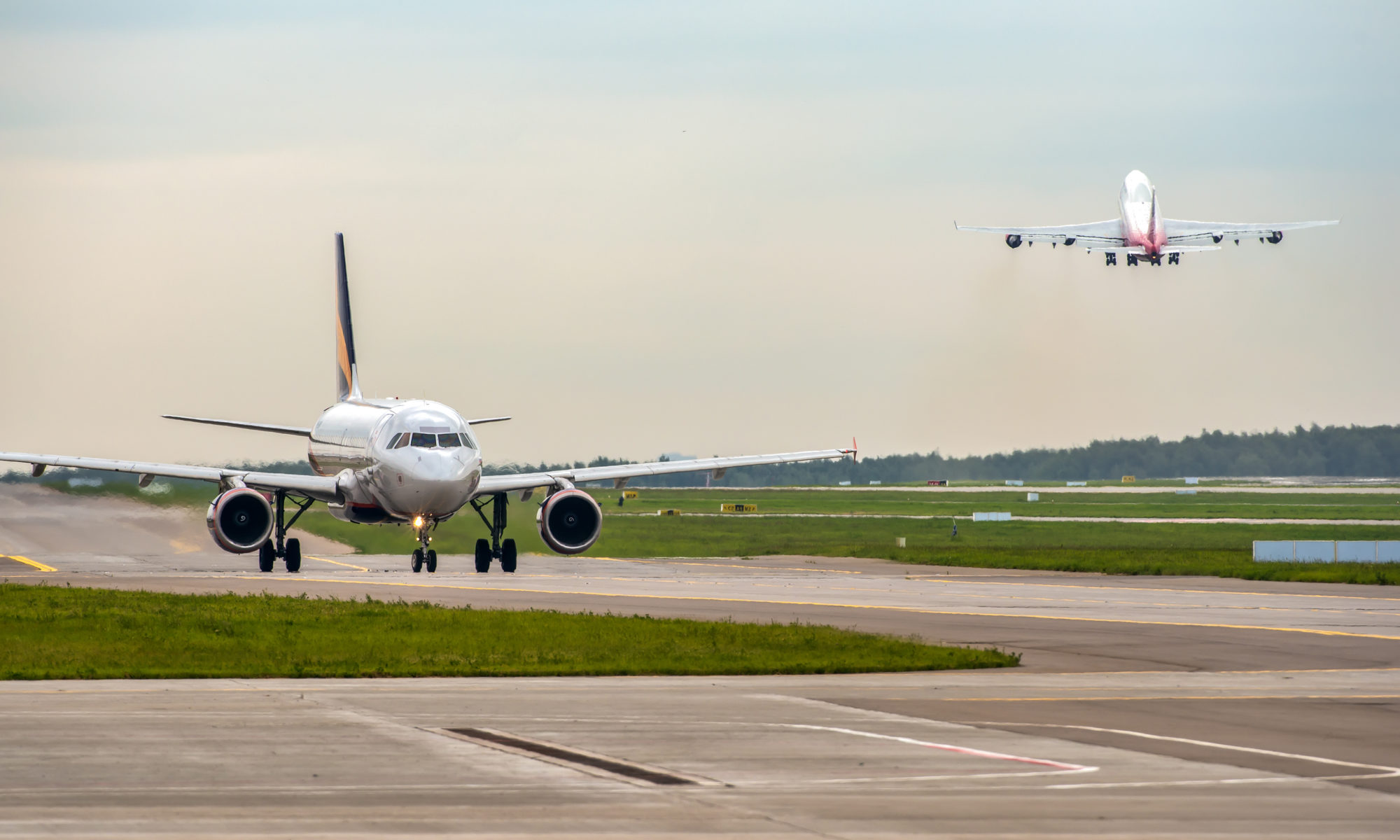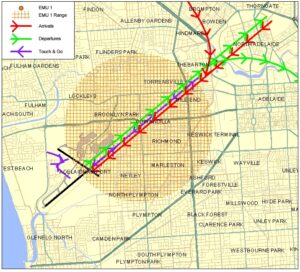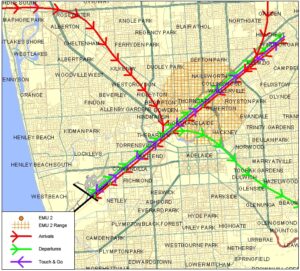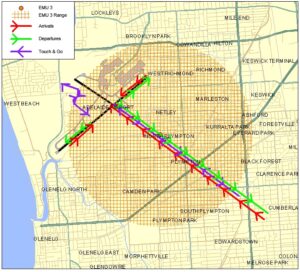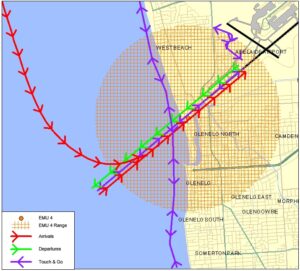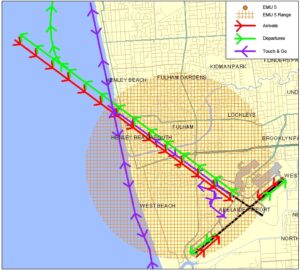We collect noise and operational data from twelve noise monitors (Environmental Monitoring Unit, EMU) around Sydney Airport. Noise monitors are listed below according to their location.
Access monthly data on our Sydney noise monitoring reports page.
Northern Monitors
Sydenham and St Peters
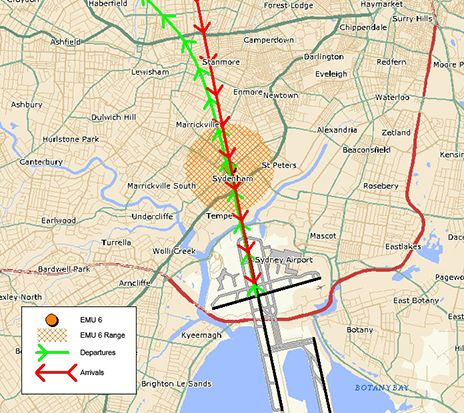
Sydenham (EMU 6)
Captures arrivals to Runway 16 Right and departures off Runway 34 Left. This monitor is closest to the threshold of Runway 16 Right/34 Left. The consistently high number of noise events reflects the high use of the main runway throughout the year.
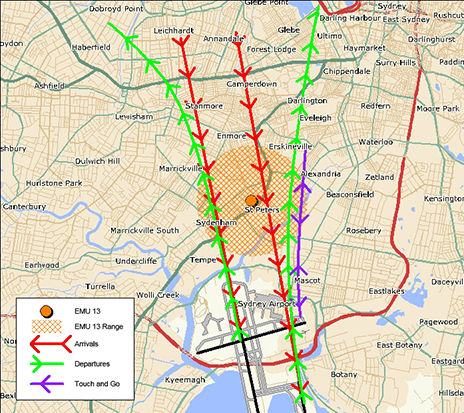
St Peters (EMU 13)
Main purpose is to capture arrivals to Runway 16 Left, however it can capture movements from Runway 16 Right/34 Left and departures off Runway 34 Right.
This monitor captures many of the same operations as the Annandale monitor and demonstrates the same seasonal pattern. However, being closer to the runway it captures more aircraft noise events.
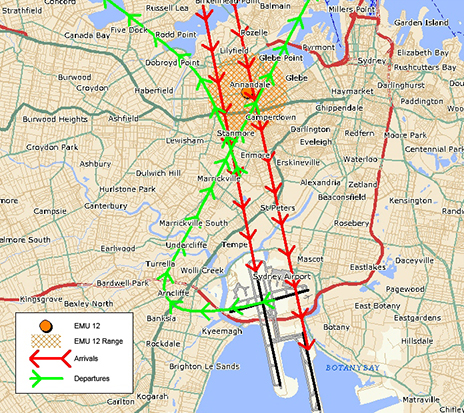
Annandale (EMU 12)
Main purpose is to capture arrivals to Runway 16 Left, however it can also capture movements from Runway 16 Right/34 Left and departures off Runway 34 Right.
The pattern of aircraft noise events recorded at this monitor reflects the seasonal pattern use of Runway 16 Right, with generally more events recorded in summer than in winter.
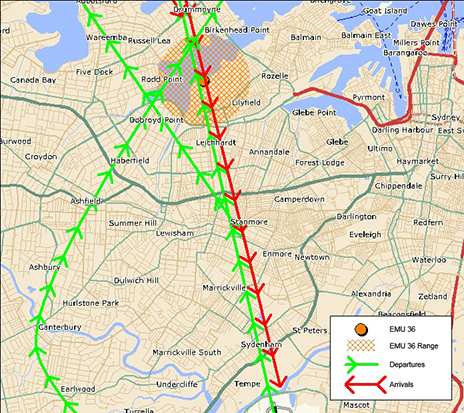
Leichhardt (EMU 36)
Captures arrivals to Runway 16 Right.
This monitor is affected by the same operations as Hunters Hill monitor and reflects the seasonal pattern use of Runway 16 Right, with more events captured in summer than in winter.
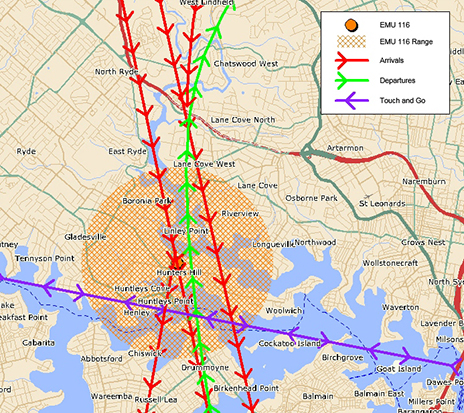
Hunters Hill (EMU 116)
Captures arrivals to Runway 16 Right.
The number of noise events recorded by this monitor reflects the seasonal pattern use of Runway 16 Right, with more events captured in summer than in winter.
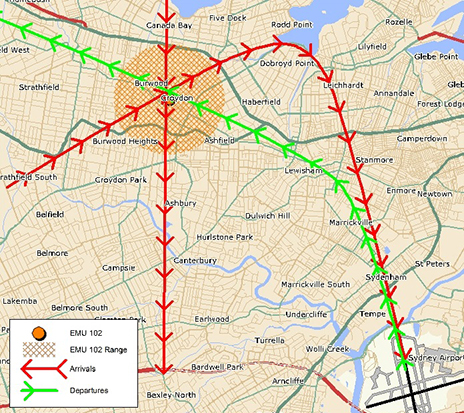
Croydon (EMU 102)
Captures departures off Runway 34 Left.
The number of noise events recorded reflects the seasonal pattern use of Runway 34 Left with more aircraft noise events captured in winter than in summer.
Southern Monitors
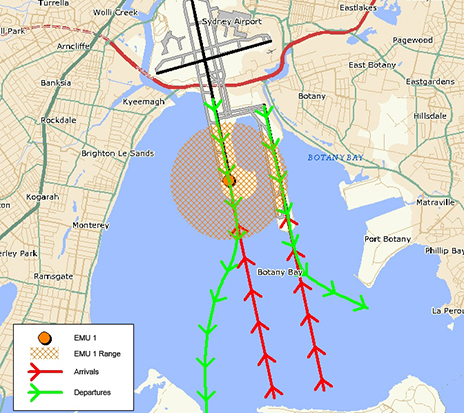
Threshold Runway 34 (EMU 1)
Captures departures off Runways 16 Right and 16 Left and arrivals to Runways 34 Left and 34 Right
The number of aircraft noise events captured reflects the pattern of use of Runway 34 Left, with more events generally recorded in winter than in summer.
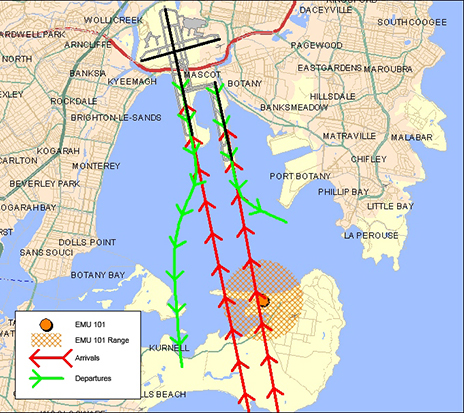
Kurnell (EMU 101)
Captures arrivals to Runway 34 Right and some arrivals to Runway 34 Left
Eastern Monitors
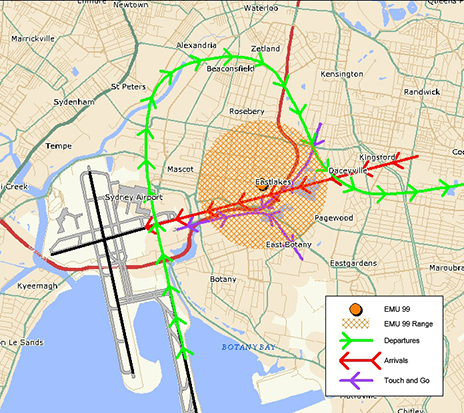
Eastlakes (EMU 99)
Captures arrivals to Runway 25 and departures off Runway 07 and Runway 34 Right.
The pattern of aircraft noise events recorded reflects the seasonal use of Runway 34 Right, with more movements in winter than in summer.
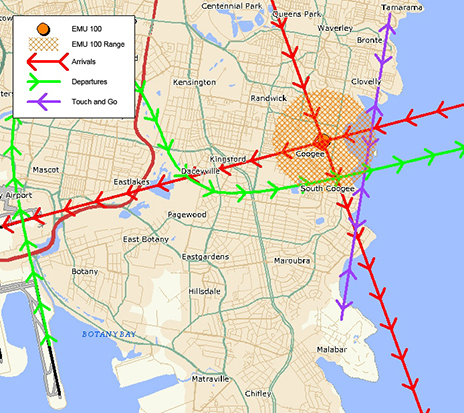
Coogee (EMU 100)
Captures arrivals to Runway 25, departures off Runway 07 and Runway 34R heading to the east and south.
Captures noise from similar operations and reflects the same seasonal pattern to the Eastlakes monitor, however being further east from the airport the number of noise events recorded is smaller.
Western Monitors
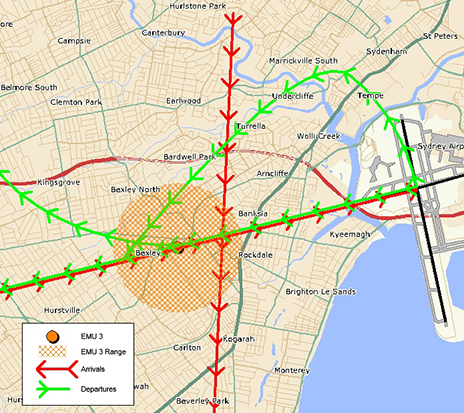
Bexley (EMU 3)
Captures arrivals to Runway 07 and departures off Runway 25.
This monitor is closer to the runway than the Penshurst monitor, therefore it displays the same trends but records more aircraft noise events.
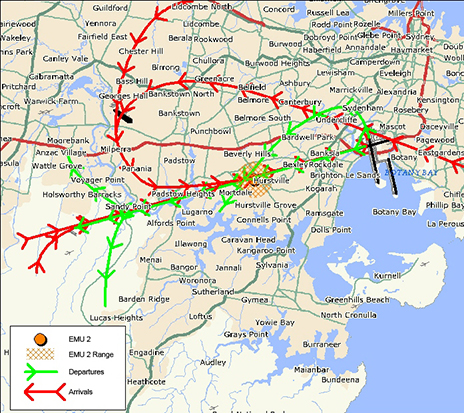
Penshurst (EMU 2)
Captures arrivals to Runway 07 and departures off Runway 25.
Historically at Sydney Airport there are fewer departures off Runway 25 than the other Runways.
Learn more about monitoring aircraft noise on the Airservices website.

